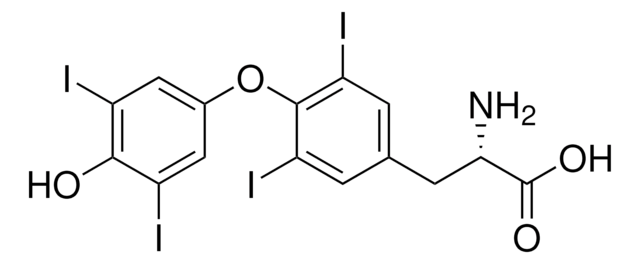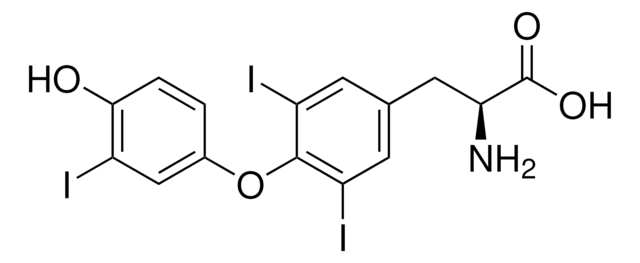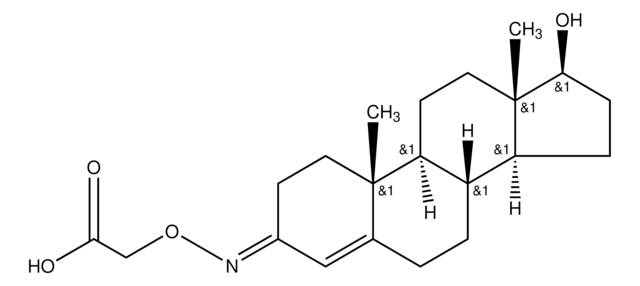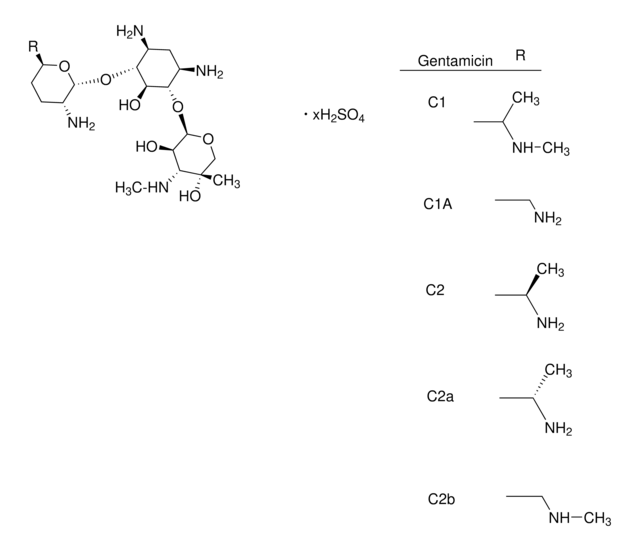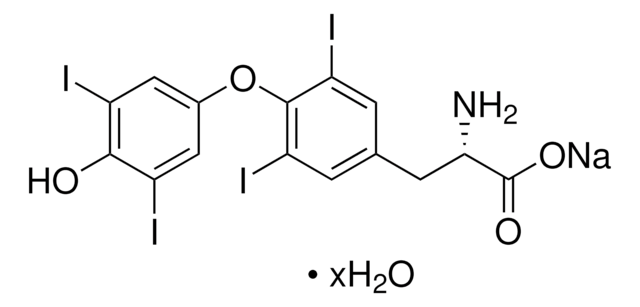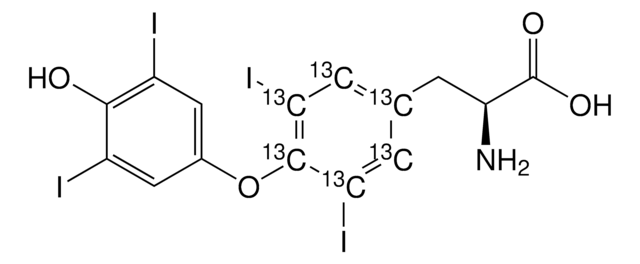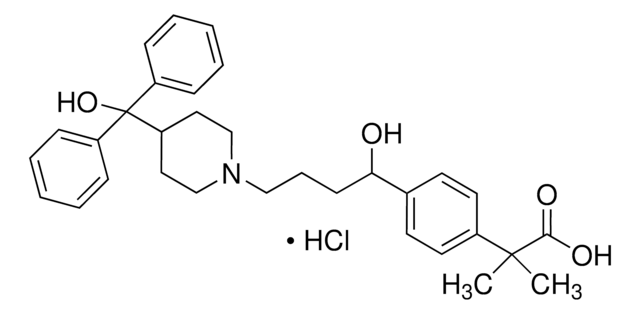T2501
L-Thyroxine sodium salt pentahydrate
≥98% (HPLC), powder
Synonym(s):
3-[4-(4-Hydroxy-3,5-diiodophenoxy)-3,5-diiodophenyl]-L-alanine sodium salt, Sodium levothyroxine, T4
About This Item
Recommended Products
biological source
synthetic (organic)
Quality Level
sterility
non-sterile
assay
≥98% (HPLC)
form
powder
mp
207-210 (dec.) (lit.)
solubility
4 M NH4OH in methanol: 50 mg/mL, clear to hazy, colorless to yellow
shipped in
ambient
storage temp.
−20°C
SMILES string
O.O.O.O.O.[Na+].N[C@@H](Cc1cc(I)c(Oc2cc(I)c(O)c(I)c2)c(I)c1)C([O-])=O
InChI
1S/C15H11I4NO4.Na.5H2O/c16-8-4-7(5-9(17)13(8)21)24-14-10(18)1-6(2-11(14)19)3-12(20)15(22)23;;;;;;/h1-2,4-5,12,21H,3,20H2,(H,22,23);;5*1H2/q;+1;;;;;/p-1/t12-;;;;;;/m0....../s1
InChI key
JMHCCAYJTTWMCX-QWPJCUCISA-M
Gene Information
mouse ... Cnr2(12802)
rat ... Cnr1(25248)
Looking for similar products? Visit Product Comparison Guide
Related Categories
Biochem/physiol Actions
Preparation Note
related product
signalword
Danger
hcodes
Hazard Classifications
STOT RE 1
Storage Class
6.1C - Combustible, acute toxic Cat.3 / toxic compounds or compounds which causing chronic effects
wgk_germany
WGK 3
flash_point_f
Not applicable
flash_point_c
Not applicable
ppe
Eyeshields, Gloves, type N95 (US)
Certificates of Analysis (COA)
Search for Certificates of Analysis (COA) by entering the products Lot/Batch Number. Lot and Batch Numbers can be found on a product’s label following the words ‘Lot’ or ‘Batch’.
Already Own This Product?
Find documentation for the products that you have recently purchased in the Document Library.
Customers Also Viewed
Our team of scientists has experience in all areas of research including Life Science, Material Science, Chemical Synthesis, Chromatography, Analytical and many others.
Contact Technical Service